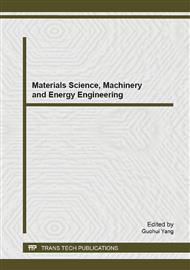p.571
p.576
p.582
p.590
p.596
p.600
p.605
p.613
p.619
Analysis on Avoid Incision in Underground Engineering Reinforcement Technique against Cutting Resistance
Abstract:
In view of serious degree of mouth formation rock weathering, poor stability, the construction excavation characteristics such as easy to collapse of underground engineering, incision reinforcement technology is used in underground engineering in the mouth period of construction, which changes the mechanical properties of surrounding rock and improves the penetration resistance of surrounding rock. Using three dimensional finite element program (ls-dyna) numerical simulations show that the stratified structure of the grouting tube in the surrounding rock is similar with covering layer thickness steel ball, which makes the projectile yaw in the process of penetration movement. As is shown through comprehensive calculation and analysis, the zero incision reinforcement technology can make the penetration resistance of the underground engineering mouth period increased by 30% ~ 40%.
Info:
Periodical:
Pages:
596-599
Citation:
Online since:
December 2013
Authors:
Keywords:
Price:
Сopyright:
© 2014 Trans Tech Publications Ltd. All Rights Reserved
Share:
Citation:


